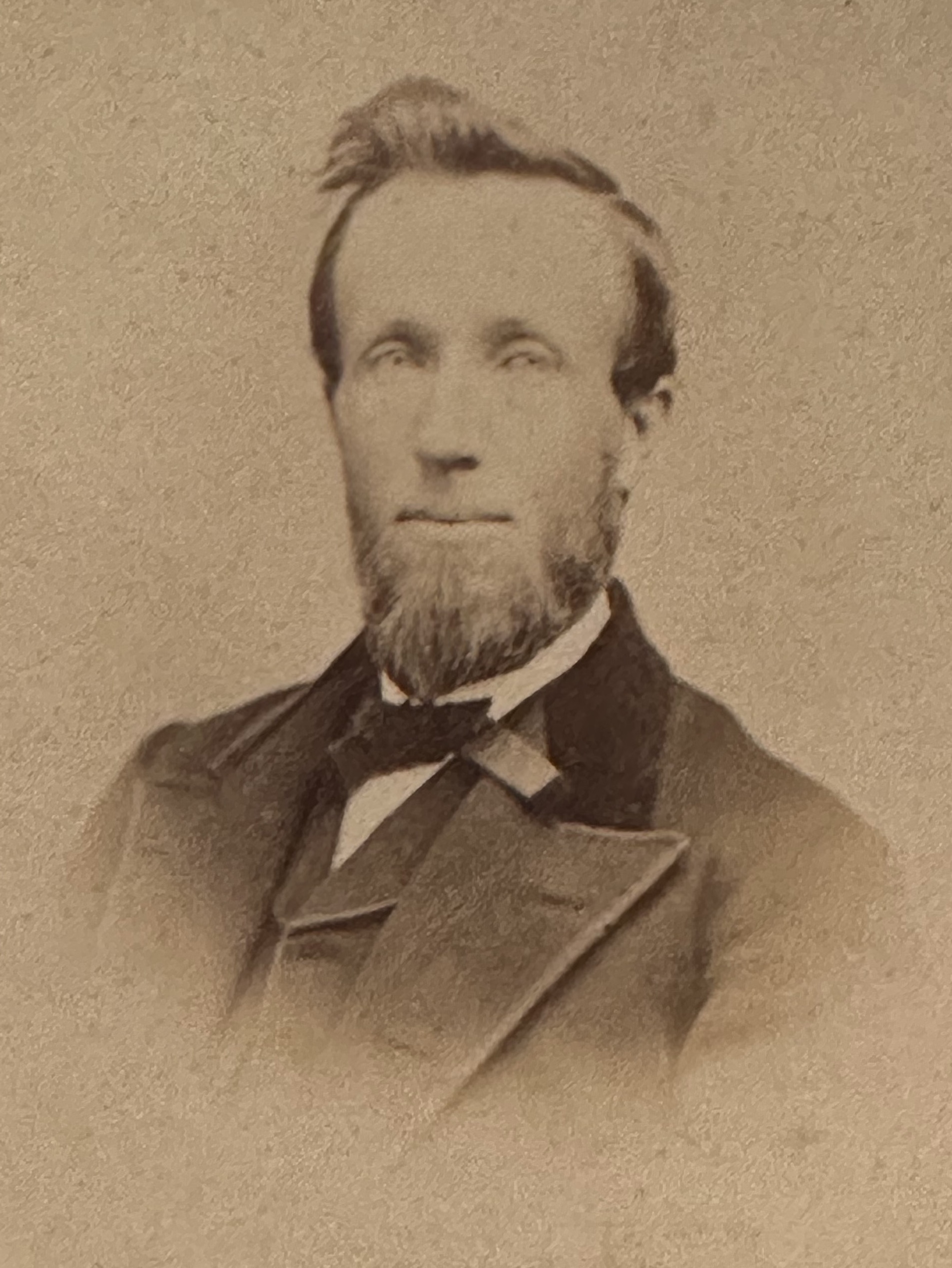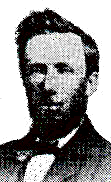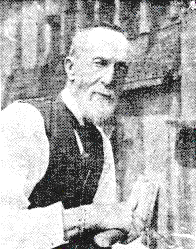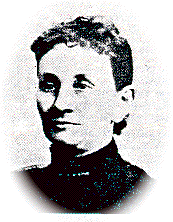Charles Parson 8 BIGELOW

I collect old photos and enjoy researching when a photo has a name.
This photo possibly Charles P Bigelow photographed in San Fran in c1860s.
lydwesglen@icloud.com Lydia Dickerson -Rich

 ...........
........... .....
.....
16164.453 Charles Parson 8 BIGELOW, second son and third child of Austin 7 ( Jonathan Oakes 6, Nathan 5, John 4, Joshua 3, Joshua 2, John 1) and Hester (Parson) Bigelow was born 04 October 1835 in the vicinity of Peru, Clinton co, NY. Charles married on 03 April 1870 Mary E. DeBender who was born 13 January 1845 in Philadelphia, PA. She was the dau of Joseph DeBender of France. Charles was a farmer, bricklayer, hotel owner, plasterer and miner in various CA locations. He died in Alameda, Alameda co., CA on 28 September 1917 and his widow in Fresno, Fresno co., CA on 06 July 1931. Charles faithfully kept a journal of the important happenings in his life from the time he was 23 years old until his death at age 82. Few persons can attest to such an accomplishment--a persistent habit of recording things as they occurred. An article published in Forge continues after the children listing.
Children of Charles P. and Mary (DeBender) Bigelow:
16164.4531 Mary Hester, b 29 Jan 1871 San Francisco, CA; died 29 Oct 1951 Lafayette, CA; married Sidney McGaw.
16164.4532 Ida Sarah, b 24 Oct 1872 Windsor, CA; died there 12 July 1873.
16164.4533 Charles Edwin, b 25 Dec 1875 Windsor, CA; died 02 Nov 1966 Turlock, CA married Catherine May Stockfleth.
16164.4534 Ella Lillie, b 18 Nov 1877 Windsor, CA; died there 22 Nov 1880.
16164.4535 Jossie Austin, b 23 Feb 1880 Windsor, CA; died there 06 Apr 1882.
16164.4536 George Alanson, b 19 July 1884 San Francisco, CA; died 11 Jan 1966 Napa, CA; married Jessie Eleanor Griffith.
Sources:
Journal of Charles Parson Bigelow, Bancroft Library, University of
California, Berkeley, CA;
Research by Sidney McGaw, Albany, CA. Submitted by Charles Allen
Bigelow, Bend, OR;
Bigelow Family Genealogy Vol. II; Pages187 and 459.
Forge article scanned by Don Bigelow.
New Note 12/17/06:
From: Ray Iddings
ray@3rocks.org
I found a note on your website stating:
“Charles'
journal records that he continued with bricklaying in San
Francisco,
then in 1867 worked at the New Idria quicksilver mine in Santa
Clara
county. >From 1867 to 1877 he was partner in a business
(perhaps dry
goods) on Battery
Street in San Francisco. After selling his share in the
business, he
again
returned to bricklaying, working on the San Francisco Customs
House,
and
at jobs in Vacaville, Valley and Millbrae. He also built a
house in the
Mission
District of San Francisco.”
You also mentioned that Charles keep a journal of important
events in
his life. Could please share copies of the portion of his
journal
regarding Idria? I am president of the New Idria Preservation
Project
and very interested in discovering early document information
about
Idria.
Thank
you,
Ray
Iddings
New Idria Historical
Proservation
Project
Three Rocks Research
142 Iowa Drive
Info from Carole Stowell Carstow@aol.com
From: Sacramento, CA
My husband, Charles Bigelow Stowell is related to this line,
Charles
Edwin, Charles Parson, Austin, Jonathan,
Nathan, John, Joshua, Joshua, John Biglo. My mother-in-law is the
second of three daughters born to Charles Edwin Bigelow
and Catherine May Stockfleth. (All daughters are still living and
in
good health.) I noticed on the third page of the genealogy
of Charles Parson Bigelow you did not have the wife of Charles
Edwin
Bigelow. My mother-in-law is 85 and very interested
in genealogy. I will have to share this information with her.
Carole
Charles left Wadhams Mills (now Wadhams), New York in 1859, and traveled to New York where he caught a ship that took him to the east coast of Panama. After crossing the isthmus by rail, he sailed from Panama City to San Francisco. His ultimate destination was Georgetown, California, where his brother Edwin was mining gold. The trip from San Francisco was by river boat to Sacramento, then by stage the remainder of the way. The mining operation did not provide him a livelihood, and he took employment as a mason and plasterer. He worked on the Georgetown Hotel, the Georgetown Store, Jacob's Store in Georgetown, a brewery in Todd valley, and the Prescott Building in Forest Grove. Edwin and Charles also produced bricks at a clay site in the Georgetown area.
In March 1861, Charles moved to San Francisco to work as a mason. working out of San Francisco, he was employed in the construction of a kiln in Santa Cruz. Charles apparently enjoyed travel. All his life, he seldom had jobs within commuting distance, and was frequently away from home. He traveled by public conveyance of all types. In the years following his marriage, his wife Mary spent much time living alone with the children while Charles was working at a distant site.
In January 1862, following one of brother Edwin's frequent moves, Charles took off for British Columbia via steamship from San Francisco to Vancouver, then up the Fraser River to Quesnel City. He and Edwin prospected until July, when Charles returned to San Francisco via the Fraser River to Lilloet, the-. cross-country by horseback to Douglas on a route near the present Highway 99, thence to Victoria where he spent a few days before the trip home to San Francisco.
Arriving there, Charles resumed his work as a mason, working at the Pacific Glass works, the Glass House, Jewish Synagogue, and the Congregational church, as well as Major Bidwell's property in Chico.
In November 1865 Charles decided to return to New York, but a robbery of the hotel safe where his savings were kept prevented him from making the trip, and influenced his living in California the remainder of his life.
In April 1866 he embarked on a very ambitious trip by horseback from San Francisco to Virginia City, Montana. The trip took over two months, over what must have been little-used roads. Joining brother Edwin, Charles prospected in the Virginia City, Big Hole River, and Helena areas until July. Charles then again returned to San Francisco traveling west through the Bitterroot Mountains and Idaho to Wallula, Washington, then by riverboat to Portland, thence by coastal steamer to his destination
Charles' journal records that he continued with bricklaying in San Francosco, then in 1867 worked at the New Idria quicksilver mine in Santa Clara county. From 1867 to 1877 he was partner in a business (perhaps dry goods) on Battery Street in San Francisco. After selling his share in the business, he again returned to bricklaying, working on the San Francisco Customs House, and at jobs in Vacaville, Valley and Millbrae. He also built a house in the Mission District of San Francisco.
His journal showed little indication of an emotional nature. His entries rarely mentioned his future wife, but on 3 April 1870 he stated: "Went to church in the forenoon, got married in the evening. Had a jolly time." His wife was Mary De Bender. Two daughters were born in the ensuing years, and in 1875 Charles recorded:"Christmas. Did not work. Charles Edwin born at four o'clock p.m."--his first son.
In 1872 a farm was purchased near Windsor, California, where some farming was done, but work as a mason continued. He raised wine grapes, apples, and hay. Most of his children were born at this residence, while Charles went to masonry jobs in San Rafael, Napa, Rutherford, Santa Rosa, Berkeley, Oakland, Healdsburg, and San Francisco. Larger jobs that kept him from home included the San Francisco City Hall, Napa Asylum, Hospital for the Deaf, Dumb, & Blind, and the CP Railroad Office & Carbarn in Oakland.
In May 1882 Charles and family went back to San Francisco and lived at 605 Dolores Street, where their sixth and last child was born. Again they purchased a ranch near Clayton in Contra Costa county, but did not live there until 1885. They raised fruit, grapes, nut trees, wheat, and barley. At the same time he undertook construction jobs in San Francisco, Oakland~ Clairville, St. Helena, Redwood City, Iona, and Pasadena.
The family moved from the ranch back to San Francisco in 1892, and for five years lived on Alvaredo Street. In 1897 they moved to Berkeley and lived on Shattuck Avenue, while Charles worked on the C & H Sugar refinery at Crockett, as well as on buildings at Sunol, Hollister, and San Mateo.
From 1901 to 1907 they lived back at the ranch in Clayton. At this period Charles constructed the Mt. Diablo Winery in Concord, the Gas works in Oakland, Alameda High School, the Power House in Emeryville, the Baptist Church in San Francisco, and Lindgren Hicks Company in Berkeley-- all carefully noted in the journal. The 1906 earthquake toward the end of this period destroyed many structures, and Charles was busy rebuilding schools in the Bay Area.
His family, finding Charles away from home most of the time, joined him and moved to Alameda in 1907. Charles, though now in his seventies, continued in masonry until 1911, when again they purchased a farm, at Sebastopol. Charles and Mary lived there until 1914, when they returned to Alameda, where Charles died 28 September 1917 of chronic nephritis.
He was of medium height, about 5'6", very slim, with blue eyes and sandy hair. From his journal entries, one gets the impression that he was a religious person, and in later life he was a member of the Methodist church. No matter where he resided, he noted his regular attendance at church. He belonged to a temperance group, an indication that he strongly objected to excessive use of alcoholic beverages.
Charles' younger years were much influenced by his elder brother Edwin's travels. Edwin had preceded Charles to California by five years. Edwin never settled in one spot, even traveling to the Hawaiian Islands.
What Charles enjoyed most was building houses and large buildings. He constructed each of the houses in which they lived, and assisted the three surviving children in building their homes. The children were in close contact with each other all their lives, and shared the tasks of farmwork, building their homes, and the manufacturing endeavors of the McGaws.
Charles' active life contributed much to the settling of California, and Bay Area buildings bear his touch even today. A poem included in the family Bible by wife Mary sums up Charles' life very well:
Ripe for the harvest, work well done,
Conflict ended, victory won,
Peacefully, nothing to fear,
Leaving behind him memories dear,
Memories that lift our feet from sod,
Memories that bring us closer to God.
Modified - 03/20/2023 (c) Copyright 2010 Bigelow Society, Inc. All rights reserved. Rod Bigelow - Director rodbigelow@netzero.net
Rod Bigelow
Box 13 Chazy Lake
Dannemora, N.Y. 12929
 rodbigelow@netzero.net
rodbigelow@netzero.net 
